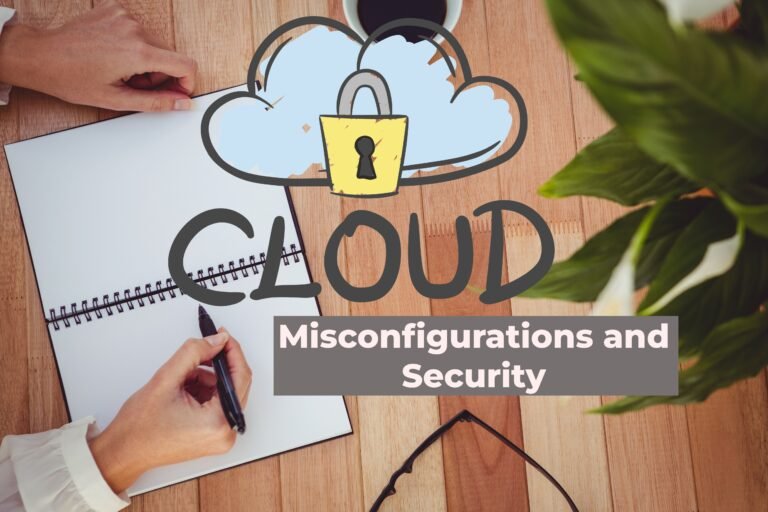How To Prevent Side-Channel Attacks?
Side-channel attacks are security exploits that subtly leak sensitive information from a system under various types of indirect data analysis. This might be in the way of power consumption, electromagnetic leaks, or even how long it takes for certain cryptographic operations to execute, as opposed to a direct breach into the software or code. They are not targeted at software vulnerabilities directly but leverage the physical and logical properties of hardware that can expose secret information. Herein, it gets appealing and equally strong.
Layering systems in their intended targets protects these advanced forms of attacks. The whole approach begins by classifying the forms of the side-channel attacks and the methods of data extraction involved. From the classification formed, various methods of defense are supposed to be applied at different layers of system design and operation. This also includes software and hardware solutions tailor-made to mitigate particular vulnerabilities. With proper vigilance and integration of advanced defensive measures, such side-channel sneaks may be reduced to a good extent, in which the integrity and confidentiality of sensitive data will hold for organizations.
What are Side-Channel Attacks?
A side-channel attack is an organized and formal technique used by attackers to obtain secret information from the system while examining physical and environmental information, other than that utilized in software vulnerabilities. These may range from sound, electromagnetic radiation, power consumption, and even time taken to execute some computations. The main characteristics that make side-channel attacks both peculiar and dangerous are the fact that they take advantage of the intrinsic hardware characteristics combined with the side effects of normal operations.
For instance, it may just be in the case where an attacker can guess the cryptographic key in use just by observing the power-usage patterns of a cryptographic device in the middle of encrypting data. In the same way, differences in the time of execution of some operations could leak information and compromise security, whether a certain branch of the code was executed or not.
This kind of side-channel attack is subtle and stealthy, meaning it’s hard to identify because it rarely interferes with the system’s normal behavior and doesn’t depend on breaking encryption or exploiting software bugs. Defense against such an attack depends on a deep knowledge of both the hardware and software architectures. Security professionals need to understand these details well to protect effectively against these attacks.
What are Key Principles to Prevent Side-Channel Attacks?
Effective protection against side-channel attacks can be achieved through several key guiding principles:
- Limit Exposure: Try to share as little sensitive information as possible. Manage things like electromagnetic signals or how much power your devices use, so attackers have less chance to sneak a peek.
- Add Noise: Mixing up the information with random bits, like adding delays or changing power levels, can hide the real data. This makes it hard for attackers to figure out what’s going on.
- Use Secure Hardware: Choose devices built to fight off these attacks. They are specially made to keep information safe and might have extra protection like shielding from electromagnetic interference or features that resist certain types of spying.
- Constant-Time Algorithms: Use methods that take the same time to finish, no matter what data they’re handling. This way, attackers can’t guess anything based on how long something takes to process.
- Regular Security Checks and Updates: Always keep an eye on the security of your systems to find any weak spots that might be attacked. This means frequently updating and fixing software and hardware to block any holes that attackers could sneak through using side-channel methods.
- Training and Awareness: Teach the people who design and develop systems about the dangers of side-channel attacks and what to watch out for. When they know more, they can build safer systems right from the start. Being aware makes it easier to put good security steps into place while making software and hardware.
By following these steps, organizations can strengthen their defense against clever and risky threats from side-channel attacks. Staying proactive is key to keeping sensitive information and operations secure.
Technical Measures to Mitigate Side-Channel Attacks

Implementing the technical steps in place to block side-channel attacks is very important for keeping systems secure. Organizations can use certain strategies and technologies to guard against these security weaknesses.
- Cryptographic Blinding: This method changes how security codes work so that they don’t directly use secret keys or sensitive information. Adding random elements to the process helps hide the data patterns that attackers could notice and use.
- Differential Power Analysis (DPA) Countermeasures: These are special steps taken to protect devices like smart cards. They help balance how much power the device uses, add random noise, and use special methods that keep power use steady during security operations.
- Electromagnetic Shielding: Covering devices with materials that block electromagnetic signals helps prevent attackers from picking up and analyzing these signals. This can involve materials that conduct electricity or block magnetic fields.
- Secure Multiparty Computation (SMC): When data needs to be processed by several different groups, SMC ensures that each group’s information stays private. It allows them to work together on a calculation without exposing their data to each other, which minimizes the risk of data leaks through side channels.
- Firmware and Software Hardening: Make your systems tougher against attacks by cutting down on weak spots in the code. Make sure your software doesn’t accidentally give away sensitive timing information or other data that attackers could use. You can also scramble the code or mix up the steps it takes to complete tasks, making it harder for attackers to guess how the software works.
- Timing Attack Protections: Keep your system’s operations consistent, no matter what task it’s doing. This can help prevent timing attacks, where attackers look at how long tasks take to guess sensitive information. Use methods that keep operation times the same and avoid making decisions based on secret information.
- Regular Penetration Testing: Regularly test your systems by simulating attacks to find and fix weaknesses against side-channel attacks. These tests help you find where information might leak and check if your protections are working.
By taking these steps, organizations can greatly improve their defenses against side-channel attacks. This helps keep critical data and operations safe from attackers who try to sneak in through indirect methods.
Implementing Organizational Controls
Besides using technical methods, it’s also very important for organizations to set up rules and procedures to strengthen their defenses against side-channel attacks. These rules help reduce risks and make sure that security steps are followed properly by everyone. Here’s how organizations can put these controls into practice:
- Policy Development: Create clear rules about how to handle data security, how devices should be used, and what to do if you suspect a side-channel attack. These rules should explain what is okay to do and what protective actions employees need to follow, especially when they deal with sensitive or secret information.
- Employee Training: It’s important to regularly train all employees, especially those in technical or security-focused jobs. Training should teach them about side-channel attacks, why it’s important to follow security rules, and what to do if they think there’s a security problem. Making employees aware helps them become a strong first line of defense against threats.
- Access Control: Having strict rules about who can access sensitive information and critical parts of your infrastructure can stop unauthorized people from getting in and reduce the chance of information leaks. This includes both physical access to important places like server rooms and digital access controls like using multiple verification steps and tight permission settings.
- Regular Audits: Regularly check your security systems and processes to find and fix weaknesses. These checks should make sure that security rules are being followed, see how well current security measures are working, and decide if updates or improvements are needed.
- Incident Response Planning: Having a strong plan ready for responding to side-channel attacks helps organizations act quickly and effectively if a breach happens. This plan should outline steps for stopping further damage, investigating what happened, fixing the issues, and communicating with everyone involved. This helps keep the impact of the attack as small as possible.
- Vendor Risk Management: It’s also important for organizations to check the security level of outside companies they work with, especially if those companies provide essential services or products. Making sure that these vendors follow strict security rules and are regularly checked can help reduce the risk of problems coming from external, less secure sources.
By combining these organizational controls with technical security measures, companies can build a strong defense against side-channel attacks. This reduces their vulnerability and boosts their overall security strength.
Case Studies
Looking at real examples where side-channel attacks either worked or were stopped can teach us a lot about these kinds of threats and how well different defense methods work. Here are two examples to show what I mean:
- The RSA SecurID Breach (2011): In this well-known incident, attackers used a clever side-channel attack to break into the security of RSA’s SecurID authentication tokens. They first got into the network by sending phishing emails to install harmful software. This allowed them to carry out a side-channel attack to steal the seed values that generate one-time passwords. This breach showed the huge importance of having strong security practices, like training employees to recognize phishing and protecting important internal data from external threats.
- Power Analysis Attack on Cryptographic Devices: In a more technical case, researchers showed how they could discover private keys from secure devices by looking at how much power they used during encryption. By examining the power use patterns while a device was encrypting messages, the researchers were able to figure out the encryption keys very accurately. This example highlighted the need to use measures against differential power analysis (DPA), like making power consumption less predictable and using cryptographic blinding to hide data patterns.
These examples show how tricky and hidden side-channel attacks can be, and they stress the need for a strong defense plan that uses both technical steps and organizational rules. What we’ve learned from these events can help organizations improve their security methods and get ready to protect against similar complex attacks.
In conclusion
In conclusion, to defend against side-channel attacks, organizations need a thorough and proactive security plan that combines technical protections with strict organizational rules. By understanding how these attacks work and using methods like cryptographic blinding, countermeasures against differential power analysis (DPA), and electromagnetic shielding, organizations can greatly lower their risk of falling victim to these indirect threats. Also, creating a culture that values security awareness and doing regular checks are crucial for keeping a strong defense. Examples like the RSA SecurID breach and power analysis attacks show how complex these threats can be and remind us to always stay alert. By putting together technical and organizational strategies, organizations can build a strong security system that keeps sensitive data safe from tricky and harmful side-channel attacks.
FAQs
What is a side-channel attack?
A side-channel attack is a type of security breach that occurs when an attacker gains access to sensitive information by analyzing the physical outputs of a system, such as power consumption or electromagnetic fields, rather than exploiting software vulnerabilities.
Can side-channel attacks be completely prevented?
While it’s challenging to eliminate the risk of side-channel attacks, their impact can be significantly reduced through a combination of technical measures, such as cryptographic blinding and noise addition, and organizational controls like strict access policies and regular security training.
What are some common types of side-channel attacks?
Common types include timing attacks, where the attacker measures the time to execute cryptographic algorithms; power analysis attacks, which monitor power usage patterns; and electromagnetic attacks, which capture electromagnetic emissions from electronic devices.
How can organizations protect against side-channel attacks?
Organizations can protect against these attacks by implementing secure hardware, using constant-time algorithms, conducting regular security audits, and ensuring that all employees are aware of and trained on the latest security protocols.
What role does software play in preventing side-channel attacks?
Software plays a crucial role by incorporating security features that minimize leaks of sensitive information. This includes deploying updates and patches to mitigate vulnerabilities, using obfuscation techniques to mask data paths, and ensuring that cryptographic operations are performed in constant time.







